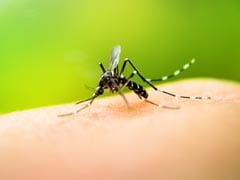Understanding hantavirus, its transmission, symptoms, and preventive measures is crucial to mitigate further risks.

Hantavirus Outbreak: Understanding The Virus Behind Recent Fatalities In California
In early 2025, the town of Mammoth Lakes in Mono County, California, experienced a concerning outbreak of hantavirus pulmonary syndrome (HPS), resulting in three fatalities. This rare, rodent-borne illness has raised alarms among public health officials, especially given its unusual early-year appearance and the unclear sources of infection in some cases. Understanding hantavirus, its transmission, symptoms, and preventive measures is crucial to mitigate further risks.
What is hantavirus?
Hantaviruses are a group of viruses primarily carried by rodents, with the deer mouse being the primary reservoir in the United States. Humans can contract HPS when they inhale aerosolised particles contaminated with the virus from rodent urine, droppings, or saliva. The disease is not transmitted from person to person. According to the Centres for Disease Control and Prevention (CDC), HPS is a severe respiratory disease with a high mortality rate.
Recent outbreak in Mammoth Lakes
As of April 2025, three residents of Mammoth Lakes have succumbed to hantavirus pulmonary syndrome. Dr. Tom Boo, Mono County Public Health Officer, expressed concern over the cluster of cases, noting that such occurrences are “tragic and alarming.” Historically, HPS cases in this region have been sporadic, making this cluster particularly unusual. Investigations revealed that one victim likely contracted hantavirus pulmonary syndrome while vacuuming rodent droppings during a known home infestation. However, the source of infection for the third victim remains unidentified, intensifying concerns about potential unknown exposure routes.
Symptoms of hantavirus pulmonary syndrome
Recognising the symptoms of HPS is vital for early diagnosis and treatment. The illness typically progresses through two stages. Symptoms of Hantavirus can appear one to eight weeks after exposure to the virus. Due to the rapid progression of the disease, seeking immediate medical attention upon symptom onset is crucial.
a. Early stage
1. Fever and chills
2. Muscle aches
3. Fatigue
4. Dizziness
5. Abdominal problems such as nausea, vomiting, and diarrhoea
b. Late stage
1. Coughing
2. Shortness of breath
3. Fluid accumulation in the lungs
Preventive measures for hantavirus pulmonary syndrome
Given the severity of HPS and the recent fatalities, it's essential to adopt preventive strategies. Implementing these measures can significantly reduce the risk of hantavirus exposure.
a. Rodent-proof your home
1. Seal gaps and holes larger than a pencil's width to prevent rodent entry.
2. Store food in rodent-proof containers.
3. Dispose of garbage promptly and use sealed trash bins.
b. Safe cleaning practices
1. Avoid sweeping or vacuuming areas with rodent droppings, as this can aerosolise the virus.
2. Instead, wear gloves and spray the area with a disinfectant or a bleach solution, let it soak, then wipe with a paper towel.
c. Reduce rodent habitats
1. Clear brush, grass, and junk from around your home.
2. Elevate woodpiles and keep them at a distance from the house.
d. Be cautious in high-risk areas
1. Use protective gear, such as masks and gloves, when cleaning barns, sheds, or other enclosed spaces with potential rodent infestations.
The recent hantavirus-related deaths in Mammoth Lakes underscore the importance of awareness and preventive action against this rare but deadly disease. While HPS cases are uncommon, the high fatality rate necessitates vigilance, especially in regions prone to rodent infestations. By understanding hantavirus pulmonary syndrome, recognising its symptoms, and adopting preventive measures, individuals can protect themselves and their communities from potential outbreaks.
Disclaimer: This content including advice provides generic information only. It is in no way a substitute for a qualified medical opinion. Always consult a specialist or your own doctor for more information. NDTV does not claim responsibility for this information.
DoctorNDTV is the one stop site for all your health needs providing the most credible health information, health news and tips with expert advice on healthy living, diet plans, informative videos etc. You can get the most relevant and accurate info you need about health problems like diabetes, cancer, pregnancy, HIV and AIDS, weight loss and many other lifestyle diseases. We have a panel of over 350 experts who help us develop content by giving their valuable inputs and bringing to us the latest in the world of healthcare.














